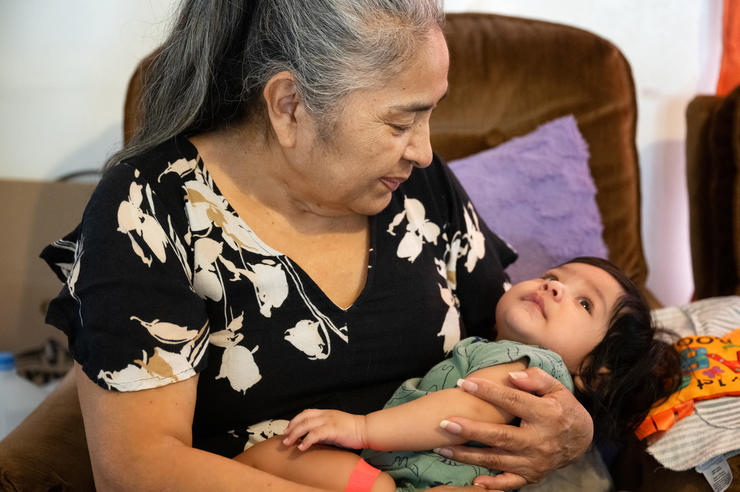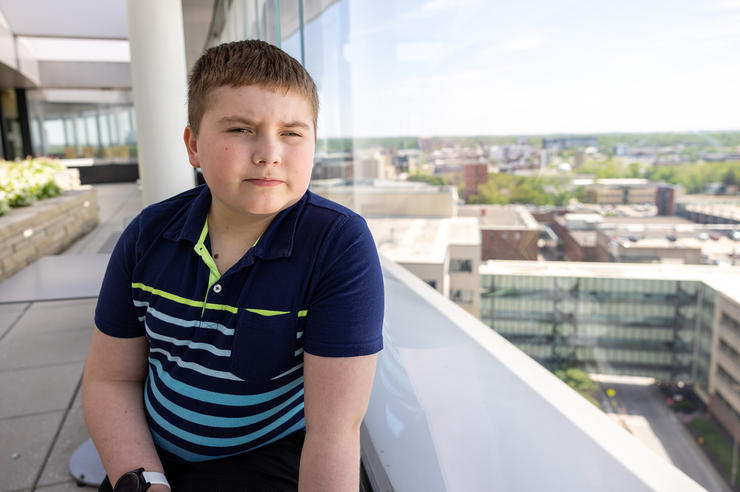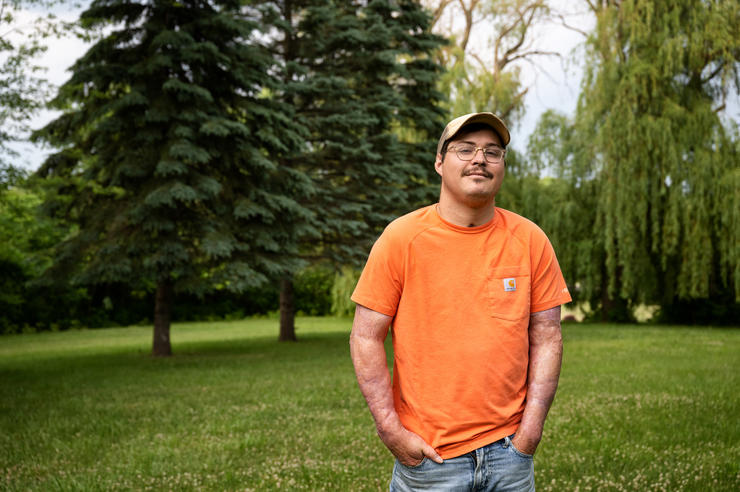Off-duty Iowa nurses save life near hospital skywalk
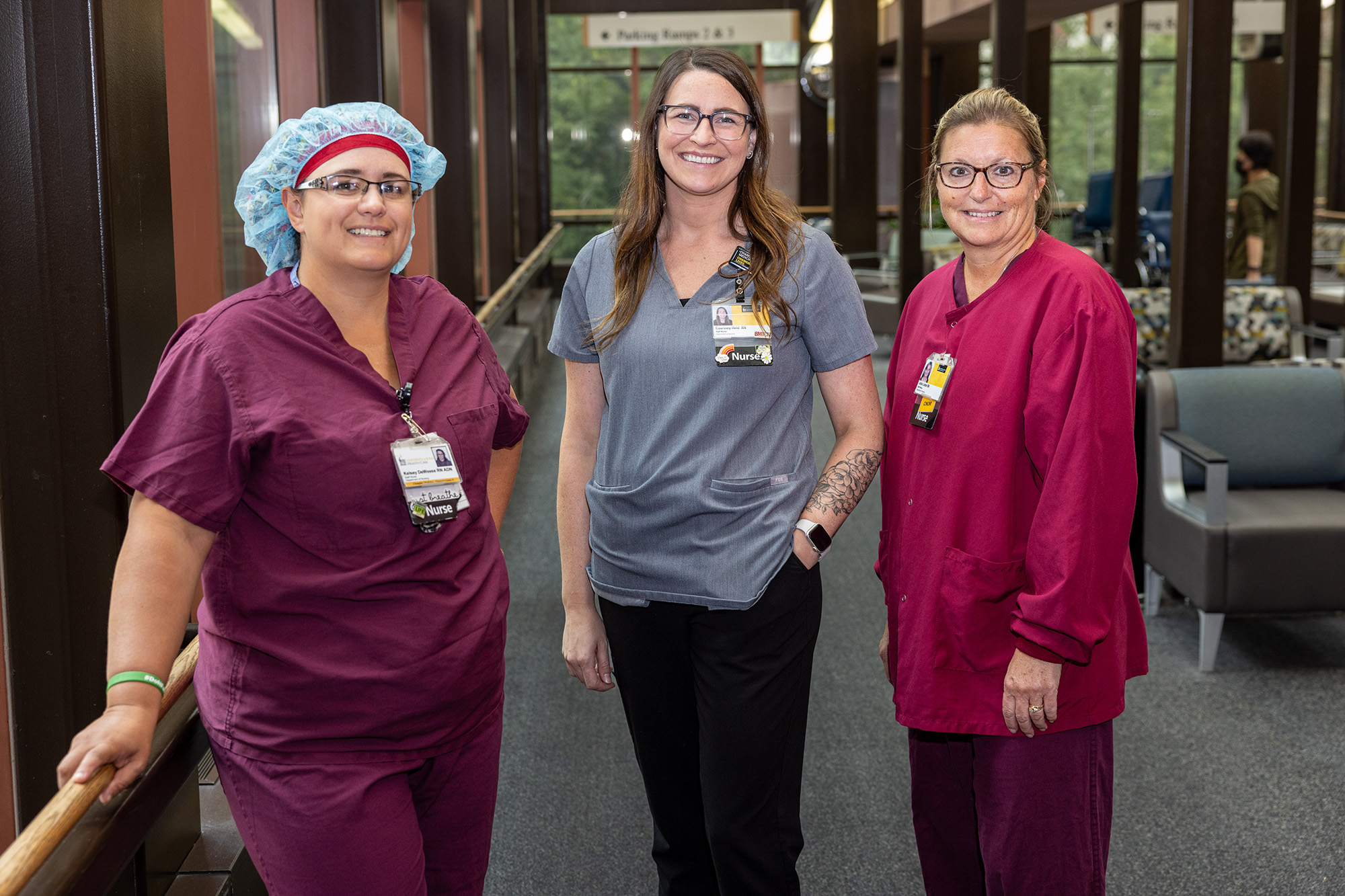
University of Iowa Hospitals & Clinics nurses (from left) Kelsey DeWeese, Courtney Heid, and Julie Liebe helped resuscitate Iowa resident Ervin Imm, who experienced sudden cardiac arrest as he and his wife were leaving the hospital.
It was a beautiful Friday afternoon in June. Julie Liebe was eager to get home after completing her nursing shift in the main operating room at University of Iowa Hospitals & Clinics. She had been able to clock out a few minutes early and made a beeline to her car.
That’s when fate stepped in.
Ervin Imm was also leaving the hospital, headed toward the skywalk that leads to the parking ramp. He had just accompanied his wife, Sherry, to an appointment, when he grabbed a siderail in the hallway and collapsed. Liebe heard the commotion behind her and spun around. Before she knew it, she was on her knees at his side searching for a pulse. He was unresponsive and turning blue.
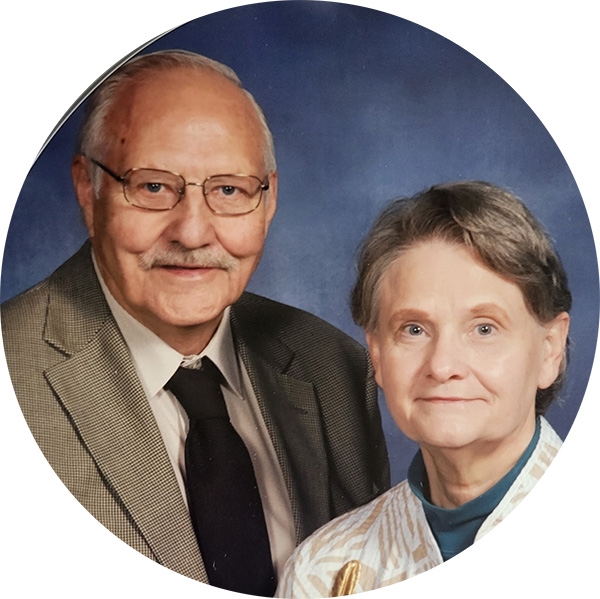
Ervin and Sherry Imm
Kelsey DeWeese, another operating room nurse finishing her workday, had entered the skywalk and, like Liebe, heard Imm fall and went back to investigate. She and Liebe pulled Imm away from the wall and began administering chest compressions. They were so focused they hardly noticed the arrival of Courtney Heid. The off-duty stem cell transplant nurse was out of breath because she had encountered the scene seconds earlier, alerted security guards to the emergency, and rushed to the hospital’s main entrance to retrieve an automated external defibrillator, or AED.
Liebe and DeWeese made room for Heid, and the trio worked in tandem, applying pads from the device to Imm’s chest and waiting for it to assess his heart rhythms. “Shock advised,” it read. The nurses followed the instructions and pressed a button to shock. Within seconds, Imm was awake and talking to hospital staff.
The resuscitation happened in a matter of minutes. Liebe had clocked out at 3:30 p.m. and got on an elevator to head home before stopping to help Imm. The shock to Imm’s heart was delivered at 3:39 p.m. The proximity of Liebe and DeWeese to Imm, coupled with Heid’s instinct to run for the AED, saved Imm’s life.
“If this had happened in the parking ramp or in the patient’s car, the outcome would have been different. It would have been too late,” says Liebe, noting that time to treatment is a crucial factor in surviving cardiac arrest. “The fact that the AED said ‘Shock advised’ meant that his heart was the reason he went down. It was not in the rhythm it needed to be in, and CPR wasn’t going to change that—but shock would. While the CPR kept his blood going to help get oxygen into his body and his brain, the shock got his heart back.”
The University of Iowa Heart and Vascular Center is home to the state’s largest and most experienced team of arrhythmia specialists, offering more diagnostic and treatment options than any other Iowa health system. Cardiac electrophysiologists collaborate with a wide range of heart specialists, including general cardiologists, heart surgeons, interventional cardiologists, and vascular surgeons, to provide comprehensive care and offer the latest treatments.
Imm was taken to the Emergency Department, admitted to the hospital, and given an implantable cardioverter defibrillator (ICD), a device that detects arrhythmias and delivers shocks when necessary. He went home a few days later, and today the 84-year-old says he feels good.
“I am very thankful that the nurses were knowledgeable and had the skills to bring me back. The entire staff at the hospital was looking out for me. I have nothing but praise for all of them,” says Imm, who recently moved from Iowa City to Waukee, Iowa, to be closer to family. “Although the ICD should prevent this from happening again, it’s always in the back of my mind that it might. I didn’t have any chest pains and I wasn’t dizzy or feeling unbalanced. I was just walking with my wife, and then suddenly I was on the floor. I had no indication that I wasn’t feeling well.”
Like Imm, most patients with sudden cardiac arrest have no warning signs, says UI cardiac electrophysiologist Paari Dominic, MBBS, MPH. Some have never experienced heart problems, and some are young and athletic. Implantable ICDs prevent some 30% of deaths from sudden cardiac arrest in patients considered at high risk.
During the implantation, a routine procedure that takes less than 45 minutes, a small incision is made in the left shoulder to insert wiring through the vein that drains blood from the arm into the heart. Dominic says UI Health Care cardiologists implant four to six ICDs a day.
“It’s not a complicated procedure and is standard everywhere you go,” says Dominic, director of electrophysiology. “Where UI Health Care makes the most meaningful difference is in our multidisciplinary post-cardiac arrest care. Everybody is involved in saving the lives of these patients, from our interventional cardiologists, to our intensive cardiac care team, to our subspecialties like neurology. We have all the teams we need to make their recovery better, and many of our cardiac patients are able to walk out of the hospital with an ICD.”
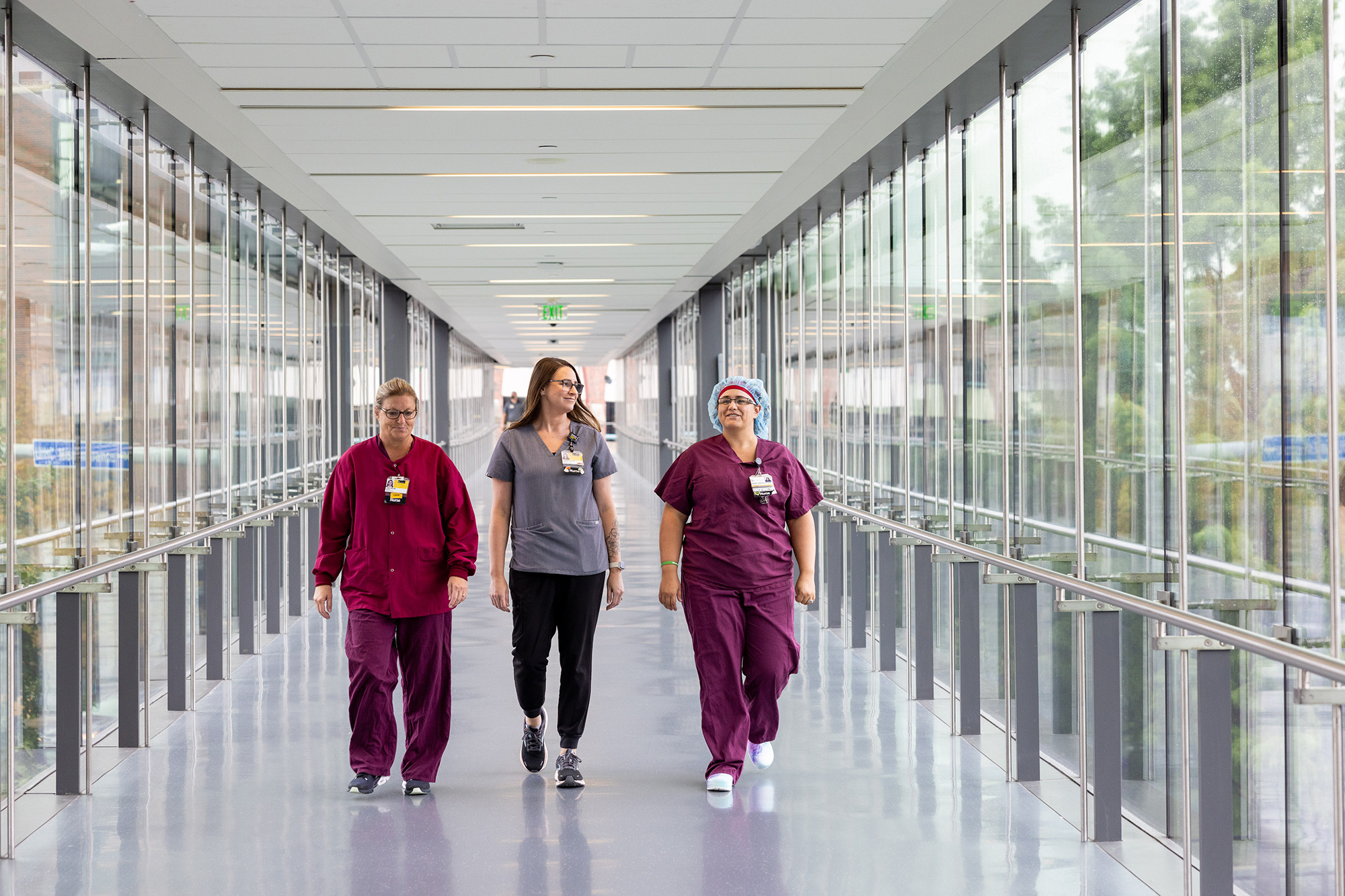
“I am very thankful that the nurses were knowledgeable and had the skills to bring me back. The entire staff at the hospital was looking out for me. I have nothing but praise for all of them.”
In Imm’s case, Dominic says, “the off-duty nurses are the real heroes. They basically decided how the rest of his hospitalization was going to go.”
You don’t have to be a health care provider, however, to use a defibrillator, Dominic says: “AEDs are simple to use and self-explanatory, with pictures. Having AEDs around is a big asset and helps saves lives. The more places we have them, the better.”
Heid had never operated an AED before, but just days before delivering the lifesaving shock to Imm, she had renewed her Basic Life Support (BLS) certification, so the treatment was fresh in her mind. She also remembered reading about the location of the AED in a recent UI Health Care employee newsletter.
“The whole time the patient was down, I was never uncomfortable—I just knew what I needed to do. When it said, ‘Shock advised,’ I didn’t hesitate,” Heid says. “I think that illustrates the importance of BLS and CPR renewals and AEDs. Who knows what would have happened if he had been shocked five minutes later?”
The resuscitation was a team effort, Liebe says, and she is grateful that Heid thought to get the AED: “We needed it, for sure, but it wasn’t the first thing on my mind. I was too worried about chest compressions and the airway and watching his color and his breathing.”
According to the American Heart Association, more than 356,000 out-of-hospital cardiac arrests occur in the U.S. annually, often without symptoms and nearly 90% fatal.
Publicly accessible automated external defibrillators (AEDs) give bystanders the potential to save lives. These portable electronic devices, which offer easy-to-follow instructions, are often placed in recreational facilities, shopping malls, schools, airports, and other public locations.
The University of Iowa has more than 130 AEDs across campus. See a map of where they are located.
Heid says the experience prompted her to lobby her church council to purchase an AED.
“These things do happen—and not just to older people,” Heid says. “An AED is such a small thing that we can have available, and it’s a lifesaving device.”
The nurses ultimately made it home that afternoon, staying with Imm until he was transported to the Emergency Department. They didn’t comprehend right away what they had done.
“I remember going home and telling my family and just kind of sitting there. I think I probably had a little bit of shock,” Liebe says. “After a while, I realized how close he was to dying. I’ve done CPR numerous times, but it’s always been in a controlled environment. Now I know I can do it, but you can’t do it alone. You need help.”
DeWeese says she is grateful that fate put them near Imm when he went down, and she found the experience reassuring.
“We were at the right place at the right time, doing our jobs even though we were off the clock,” she says. “It’s good to know that outside of the rooms we work in every day, we can do it. We can nurse in our sleep.”
